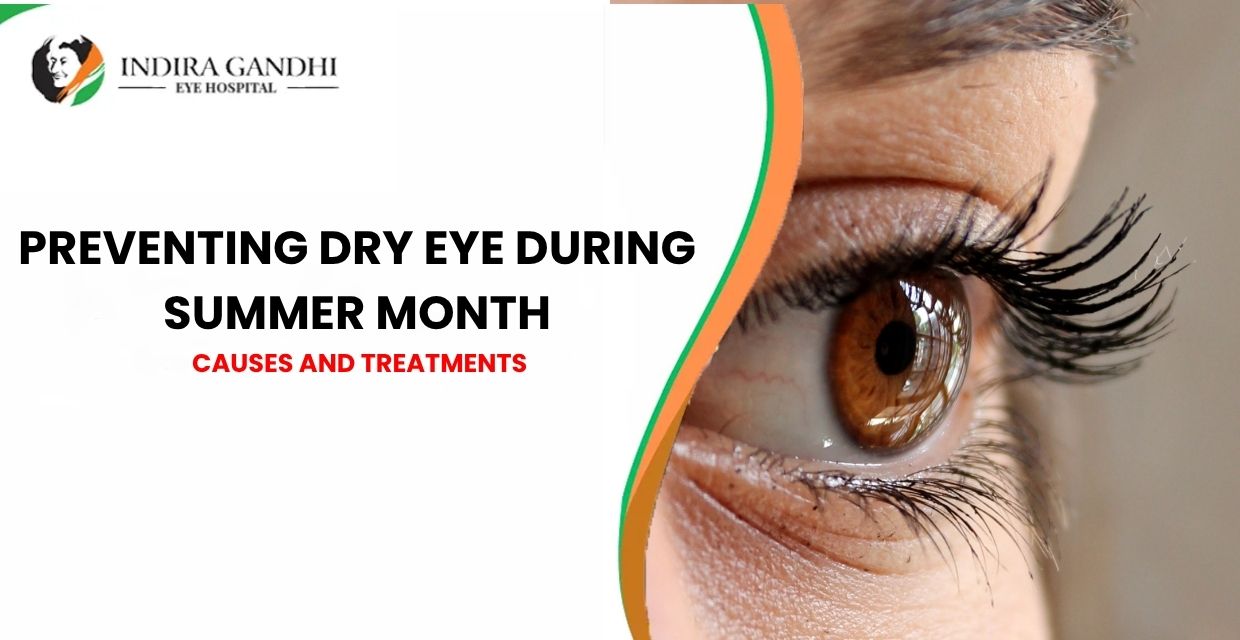|
Getting your Trinity Audio player ready...
|
As the sun shines brighter and the temperatures climb, we often think about protecting our skin, staying hydrated, and perhaps even shielding our hair from the summer elements. But how often do we consider the impact of these warmer months on our precious eyes, especially when it comes to preventing dry eye during summer months?
If you’ve ever experienced that gritty, burning sensation, blurry vision, or a feeling like something’s constantly in your eye, you know how uncomfortable dry eye can be. And unfortunately, summer, with its unique set of environmental factors, can often exacerbate these symptoms or even trigger them in individuals who haven’t experienced them before. But don’t fret! At Indira Gandhi Eye Hospitals, we’re here to help you understand why your eyes might feel drier in the heat and what proactive steps you can take to keep them feeling fresh, comfortable, and healthy throughout the season.
Understanding Dry Eye: More Than Just a Little Dryness
Before we dive into the specifics of preventing dry eye during summer months, let’s first get a clearer picture of what dry eye actually is. Dry eye disease (DED), also known as ocular surface disease, is a common condition that occurs when your eyes don’t produce enough tears, or when the tears they do produce aren’t of the right quality. Tears are essential for healthy vision; they lubricate the eye, wash away foreign particles, and protect the eye from infection.
Our tears are a complex mixture, not just plain water. They consist of three main layers, often referred to as the “tear film”:
- Mucin Layer: The innermost layer, produced by goblet cells in the conjunctiva, helps the watery layer spread evenly over the eye’s surface.
- Aqueous (Watery) Layer: The middle and thickest layer, produced by the lacrimal glands, keeps the eye moist, washes away irritants, and nourishes the cornea.
- Lipid (Oily) Layer: The outermost layer, produced by the meibomian glands along the eyelids, creates a smooth surface for vision and, crucially, prevents the aqueous layer from evaporating too quickly.
When any of these layers are compromised, or if tear production is insufficient, you can develop dry eye. This leads to a range of uncomfortable symptoms, including:
- A gritty, scratchy, or burning sensation
- Redness
- Light sensitivity
- Blurry vision, especially after reading or looking at a screen
- A feeling of having something in your eye
- Surprisingly, excessive tearing (this happens when the eye tries to compensate for dryness by producing a flood of watery, but not high-quality, tears)
Prevent Dry Eye This Summer
Discover expert care, treatment options, and tips to stay protected from Dry Eye this season.
Book an Appointment

